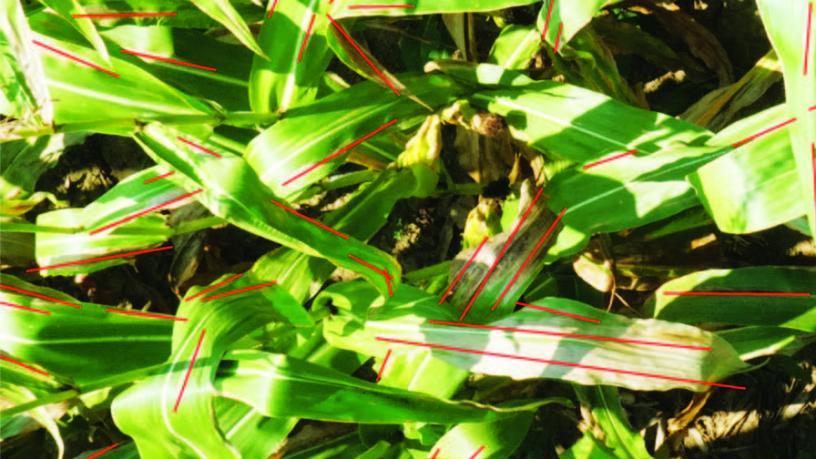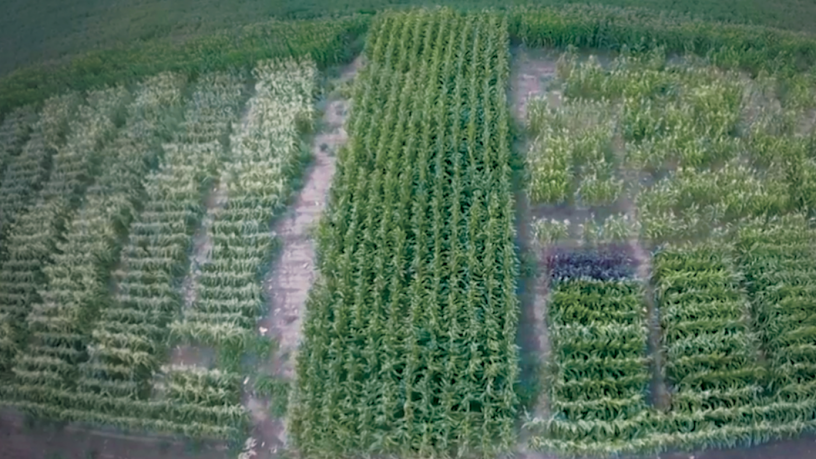Intelligent Drones Could Help Farmers Increase Yields Dramatically
Professor Hod Lipson has built a system capable of diagnosing the dreaded northern leaf blight in cornfields better and faster than human experts.
Billions of dollars in corn are lost each year to diseases such as northern leaf blight (NLB). A team of researchers from Columbia Engineering's Mechanical Engineering and Computer Science departments led by Professor Hod Lipson has developed a system based on deep learning architecture that can automatically identify NLB lesions from images of maize plants acquired in the field, either by low-flying drones or ground-based robots.

Patterns of northern leaf blight can be detected from the air by drones. (Image courtesy of Hod Lipson)
These sharp-eyed, mobile scouts do the job far more quickly and just as accurately as human experts trudging through the fields: the system was 97.6 percent accurate in tests. The research suggests that, with specialized training, drones can potentially help with high-throughput plant phenotyping, precision breeding for disease resistance, and reduced pesticide use through targeted applications, across a variety of plant and disease categories, Lipson said. An estimated 13 percent of potential global crop yield is lost to disease each year-with more lost during epidemics.
Recent improvements in convolutional neural networks, enabling computer vision systems to classify images more accurately, gave Lipson's team the opening to design an effective tool. Columbia PhD student Chad DeChant developed a hierarchy of deep learning nets to efficiently learn which features of an image are most important for making classification decisions. This task is more difficult to accomplish in the field than with artificially controlled lab samples-factors such as lighting variations, shadows, and exposed soil can confuse the system-so the researchers, working with Cornell University colleagues Rebecca Nelson and Michael Gore, trained neural networks with images collected from cornfields in upstate New York that contained varying levels of NLB.

A drone's-eye view of a test cornfield paired with artificial intelligence helps locate crop diseases. (Image courtesy of Hod Lipson)
A major challenge, Lipson said, was gathering the vast volumes of data required to train such nets. One way around the data-scarcity problem, he suggested, is to seed the agricultural research community with more drones busily collecting more images. To that end, Lipson's plan is to open-source their system in the expectation that producing a bumper crop of intelligent drones will lead to breeding better plants and will result in higher yields. "The more drones there are, the more they will share data and learn from each other," he pointed out.
Lipson, director of Columbia Engineering's Creative Machines Lab, has about a dozen active projects in the works, some more abstract than others, but all tied to an application, from breeding corn for early bloom to predicting earthquakes. Artificially intelligent self-awareness—think: robots that learn about themselves—particularly fascinates Lipson, a robotics and 3D printing evangelist. "I try to take on long-term, difficult issues and see if algorithms can make a dent in them," he said.
